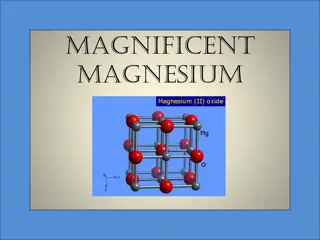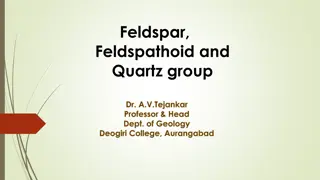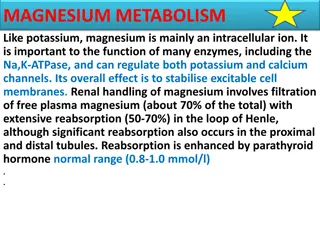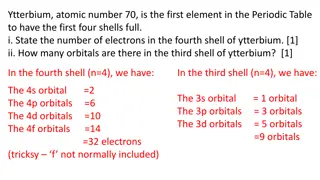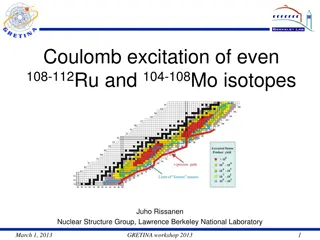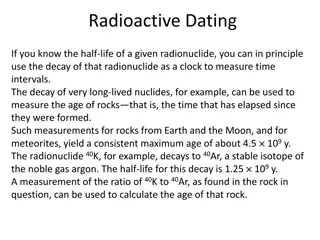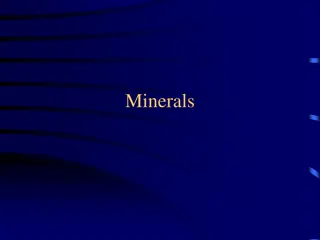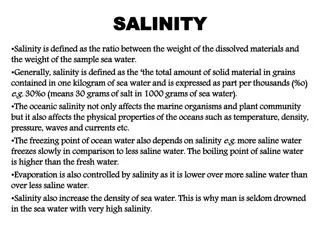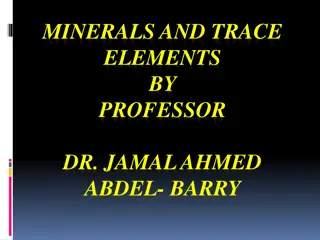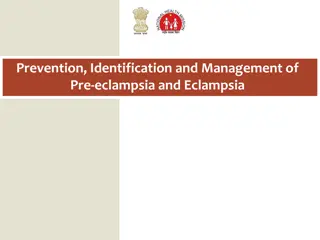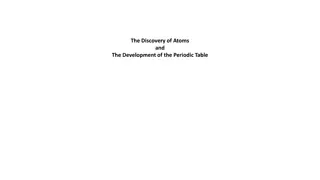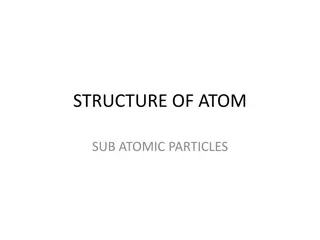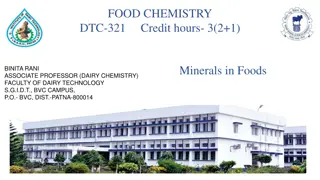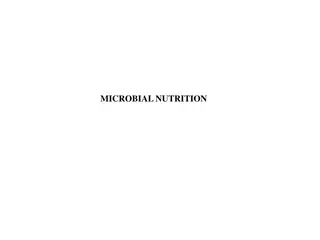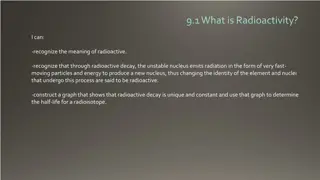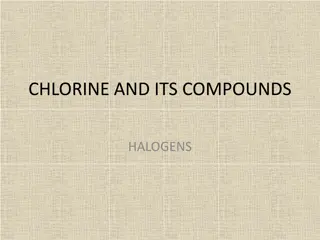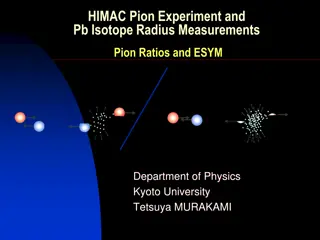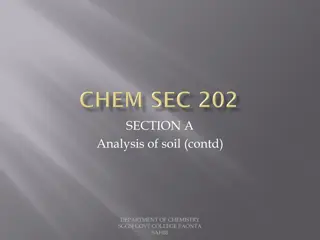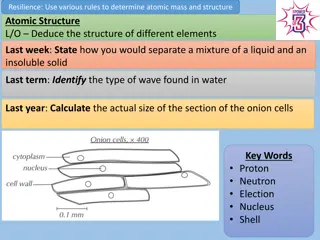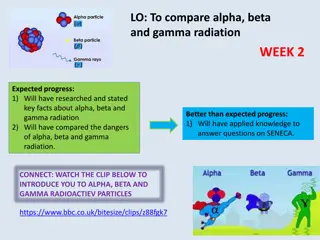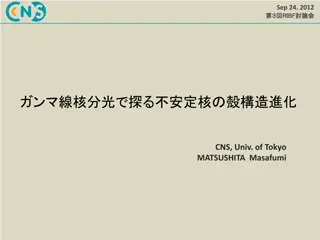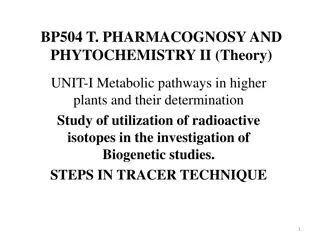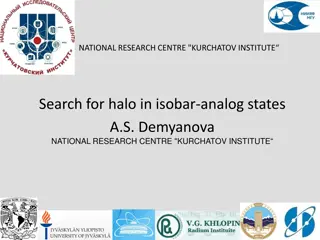Insights on Presolar Silicates and Magnesium Isotopes
Primitive meteorites contain presolar grains with unique isotopic compositions, paving the way for the study of stardust from stars to laboratories. Ion imaging techniques reveal the abundant presence of presolar silicates, showcasing advancements in in situ studies facilitated by cutting-edge technology. Oxygen and magnesium isotopic systematics offer insights into distinct groups of stellar sources, ranging from low-mass AGB stars to supergiants and beyond.
Download Presentation

Please find below an Image/Link to download the presentation.
The content on the website is provided AS IS for your information and personal use only. It may not be sold, licensed, or shared on other websites without obtaining consent from the author. Download presentation by click this link. If you encounter any issues during the download, it is possible that the publisher has removed the file from their server.
E N D
Presentation Transcript
The Stellar Sources of Presolar Silicates Revisited New Insights from Magnesium Isotopic Compositions Peter Hoppe & Jan Leitner The 13th Torino Workshop on AGB stars & the 3rd Perugia Workshop on Nuclear Astrophysics June 19-24, 2022
Introduction (I) Introduction O&Mg Si Summary Presolar Grains Primitive meteorites contain small quantities (ppb to per mill) of refractory dust grains with highly anomalous isotopic compositions First hints on the presence of meteoritic minerals with highly anomalous isotopic compositions in the 1960s Separation of SiC as carrier of anomalous noble gas components in the 1980s Presolar origin Stardust (presolar grains) 2
Introduction (II) Introduction O&Mg Si Summary Presolar Grains: Path from Stars to the Laboratory 5 4 2 1 3 3
Introduction (III) Introduction O&Mg Si Summary 4
Introduction (IV) Introduction O&Mg Si Summary Presolar Silicates Silicates are the most abundant group of presolar (stardust) grains Can be identified only in situ by ion imaging techniques, preferentially in the NanoSIMS Typical sizes of 150 nm, only a small fraction has sizes >300 nm For a long time useful isotope data mostly only for O (Cs ion source, <100 nm resolution) because in situ studies of electropositive elements (e.g., Mg) were limited to 200-300 nm spatial resolution New Oregon Physics Hyperion O ion source now permits in situ studies of electropositive elements with a spatial resolution comparable or even better than with the Cs ion source 5
Introduction (V) Introduction O&Mg Si Summary The NanoSIMS Ion Probe 6
Introduction (VI) Introduction O&Mg Si Summary Ion Imaging Focused O-ion beam (<100 nm) was rastered over 2 x 2 m2- sized area around the presolar silicate grain 7
O- and Mg-Isotopic Systematics (I) Introduction O&Mg Si Summary Oxygen-Isotopes 4 distinct O Isotope groups Group 1 (80%): Low-mass AGB stars SNe, supergiants, intermediate-mass AGB stars Group 2: Intermediate-mass AGB stars with HBB SNe, supergiants, super AGB stars Group 3: Low-mass, low metallicity AGB stars SNe Group 4 (10%): SNe 8 Data from WU PSG Database; Hynes & Gyngard 2009
O- and Mg-Isotopic Systematics (II) Introduction O&Mg Si Summary 25Mg-Rich Group 1 Grains Leitner & Hoppe NatAst 2019 9
O- and Mg-Isotopic Systematics (III) Introduction O&Mg Si Summary Magnesium Isotopes of Group 1 Silicates 4 distinct subpopulations of Group 1 grains Normal (60%): Low-mass AGB stars At least 50% from SNe Intermediate-mass, high metallicity AGB stars Supergiants SNe SNe/supergiants contribution (Groups 1-4) >30% 25Mg-rich (25%): 26Mg-rich & 25Mg-poor (15%): 10 Hoppe et al. ApJ 2021
O- and Mg-Isotopic Systematics (IV) Introduction O&Mg Si Summary Normal Group 1 Silicates Mg isotopes plot along slope ~1 line, the Mg mainstream line, which likely represents GCE Origin from low-mass AGB stars O-isotopic signatures Only small Mg isotope anomalies expected according to stellar models (e.g., Karakas & Lugaro 2016) Si-isotopic compositions support this view 11 Hoppe et al. ApJ 2021
O- and Mg-Isotopic Systematics (V) Introduction O&Mg Si Summary 25Mg-rich Group 1 Silicates SNe are promising sources for 25Mg-rich grains Pignatari et al. (2015) presented a set of SN models with H ingestion into He shell during pre-SN phase of 25 M star Strong enrichments of 25Mg in O/Nova zone pronounced 26Mg enrichments are much less 12 Pignatari et al. ApJL 2015
O- and Mg-Isotopic Systematics (VI) Introduction O&Mg Si Summary 25Mg-rich Group 1 Silicates 25Mg-rich grains can be well fitted by Pignatari et al. (2015) H ingestion SN models and mixing with pre-SN wind matter Intermediate-mass (4-5 M ) AGB stars with super-solar metallicities may be alternative sources for grains with 25Mg < 300 (K&L16) Novae are unlikely sources: Quantitative comparisons of models (Jos & Hernanz 1998) with grain data reveals serious incompatibilities Novae contribute only 0.1% of dust to ISM (Gehrz et al. 1998) while 25Mg-rich grains account for 20% of PSGs Massive AGB stars (>7 M ) can reproduce Mg- isotopic signatures but are expected to have very low 18O/16O due to HBB (K&L16) unlikely sources Hoppe et al. ApJ 2021 13
O- and Mg-Isotopic Systematics (VII) Introduction O&Mg Si Summary 25Mg-poor & 26Mg-rich Group 1 Silicates 26Al decay can be excluded for shift away from GCE line in AGB star grains Red and blue supergiants and SNe are good candidate sources: GCE + pre-SN (supergiant) wind evolution GCE + pre-SN wind + (post-explosion) SN envelope (25T-H, Pignatari et al. 2015) Mg-isotopic compositions of 25Mg-poor and 26Mg-rich grains can be reproduced Hoppe et al. ApJ 2021 14
Si-Isotopic Systematics (I) Introduction O&Mg Si Summary Silicate Si Mainstream Line Normal Group 1 silicate grains plot along a line 29Si = (1.37 0.10) x 30Si - (3 9), the silicate Si mainstream line Same slope as SiC Si mainstream line but shifted by 12 6 to 30Si-poor side Silicates form before SiC, when DUP of s-process matter is less efficient Overprint of s-process Si from 3. DUP in low-mass AGB stars in SiC Si mainstream line Silicate Si mainstream line may be a better proxy for GCE Other Group 1 silicates plot close to the silicate Si mainstream line, in agreement with predictions from stellar models Hoppe et al. ApJ 2021 15
Si-Isotopic Systematics (II) Introduction O&Mg Si Summary GCE of Mg & Si 25Mg and 29Si of normal Group 1 silicate grains are correlated along a slope ~1 line Support for GCE interpretation of Mg and Si in normal Group 1 silicates Hoppe et al. ApJ 2021 16
Summary Introduction O&Mg Si Summary Based on Mg-isotopic compositions, O isotope Group 1 grains (majority of presolar silicates) can be divided into 4 subpopulations: Normal (60%), 25Mg-rich (25%), 25Mg-poor (5%), and 26Mg-rich (10%) Stellar sources: Normal Group 1 grains: Low-mass AGB stars AGB stars with super-solar metallicities >30% of presolar silicates formed in SN ejecta or supergiant winds, much more than previously thought Imprints of GCE in Mg and Si isotopes of normal Group 1 grains Silicate Mg mainstream line has a slope ~1 Silicate Si mainstream line (slope 1.37) is slightly shifted to 30Si-poor side of SiC Si mainstream line and may be a better proxy for the GCE of Si isotopes 25Mg-rich, 25Mg-poor, 26Mg-rich grains: SNe, supergiants, intermediate-mass 17


